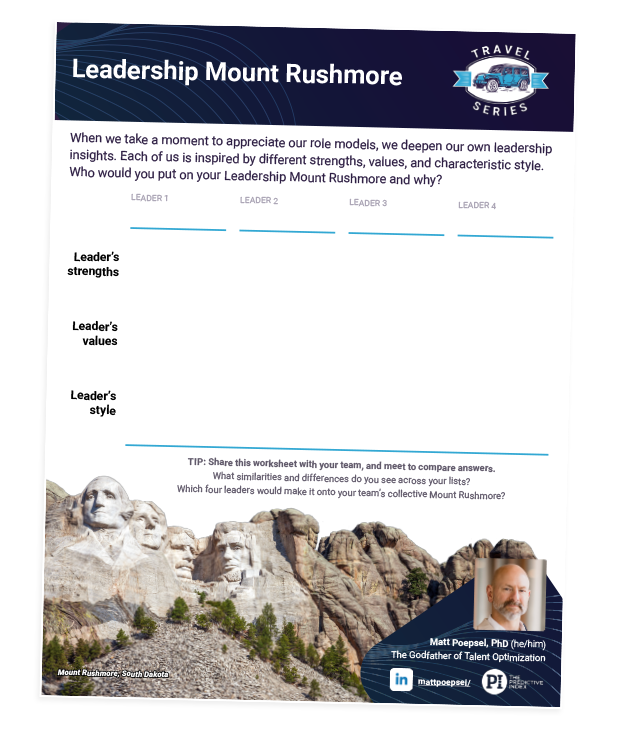Four familiar faces tower high in the South Dakota sky. From 1927 to 1941, sculptor Gutzon Borglum and his son Lincoln oversaw the construction of Mount Rushmore. The project was originally intended to feature notable figures from the American West, but Gutzon chose to memorialize four presidents. The National Park Service (NPS) notes that he chose these four because they represent the nation’s birth, growth, development, and preservation.
The NPS goes on to pose this curious hypothetical:
Think about what you might have done if the decision was up to you.
As a leadership aficionado, my mind immediately shifted from matters of politics to those of enterprise. Recognizing and reflecting on admirable leadership capabilities is both motivating and empowering, so who belongs on the leadership equivalent of Mount Rushmore?
Because leadership is a highly individualized practice, there’s no wrong answer. The most important answer is your own.
To help you think through this, I created this Mount Rushmore-themed worksheet. Choose four leaders you know personally or choose famous figures from history or modern times. Think about what specific strengths, values, and leadership styles they demonstrate in a way that inspires you.
Download the worksheet “Leadership Mount Rushmore” now. Why not make it a quick and informative team building exercise by sharing it with your team members and comparing responses?









